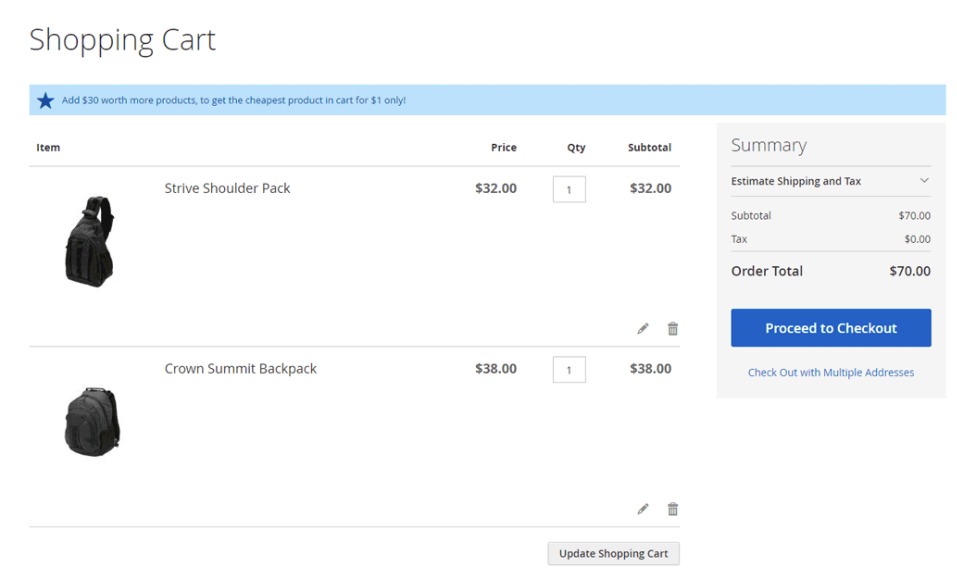Cheapest / Most Expensive
This promo type allows discounting the Nth cheapest / most expensive item in the cart. It can be the cheapest item, the second most cheapest, the most expensive, the thrid most expensive and so on.
Promo examples:
- Buy 3 bags and get the cheapest with a 10% discount
- Buy watches for $300 or more and get the most expensive with a 5% discount
- Get the third most expensive t-shirt for $5
Configuration
In the actions list, we have the "Cheapest / Most Expensive" action type -
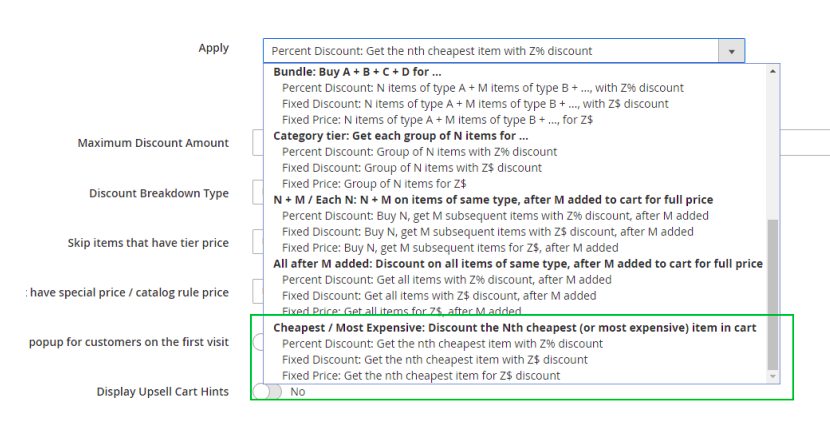
Once selected, the following fields will show up -
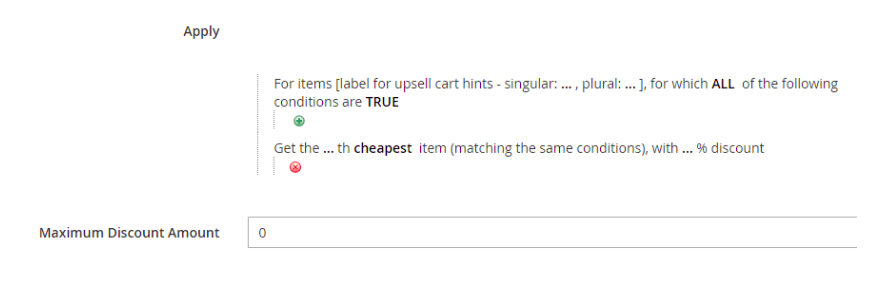
Fields explanation
- For items [label for cart hints – singular / plural – the name that will show up in the cart hints, representing the discounted items.
- Items for which ALL of the following conditions are TRUE [top] – the condition that defines the discounted items.
- Get the … th – the sequential number of the discounted item (eg: if we want to discount the cheapest item in cart, we will fill in 1)
- Get the ... th cheapest / most expensive items – the order of items by which the discount is getting applied. (That is, selecting “cheapest” here and “1” in the previous section will discount the cheapest item in the cart. Selecting “most expensive” here and “2” in the previous section will discount the second most expensive item in the cart).
- With …% discount – the discount percent that will be applied on the item.
- Maximum Discount Amount – maximum discount amount that customer can get in his cart using this promotion
Cheapest / Most Expensive – Percent Discount
Example
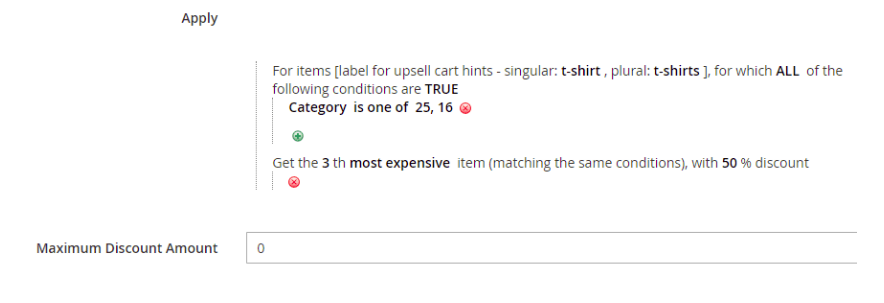
The rule in this example is – “Get the third most expensive t-shirt with 50% discount”. The maximum discount amount is 0, that is, there is no limit on the maximum discount amount.
Note: In our example, t-shirt is any product that belongs to category 16 (men t-shirts) or category 25 (women t-shirts)
Cart examples for this rule:s
- Customer has 1 t-shirt in the cart, there is no discount
- Customer has 2 t-shirts in the cart, there is no discount
- Customer has 4 t-shirts in the cart – 5$, 10$, 20$, 30$, the discount amount is 10$
Upsell cart hints example for this rule:
- Customer has 1 t-shirt in cart. The upsell cart hint is “Add one more t-shirt, to get the next (same price or more expensive) t-shirt with 50% discount!”
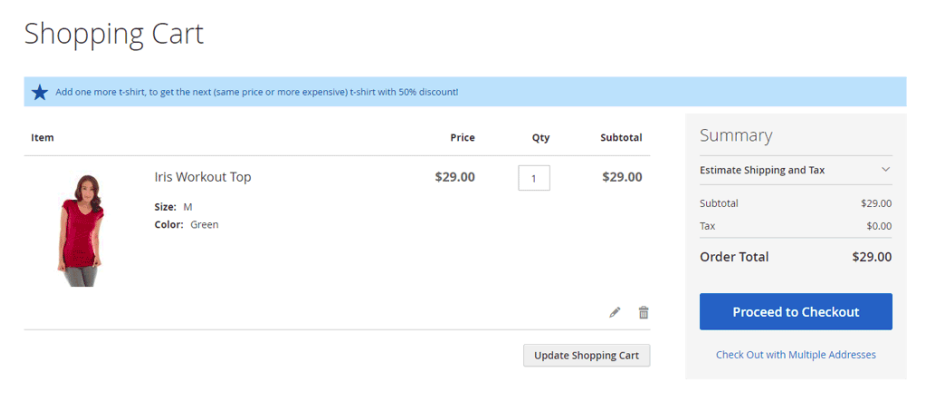
- Customer has 2 t-shirts in cart. The upsell cart hint is “You can now add another (same price or more expensive) t-shirt with 50% discount!”
Cheapest / Most Expensive - Fixed Discount
Example
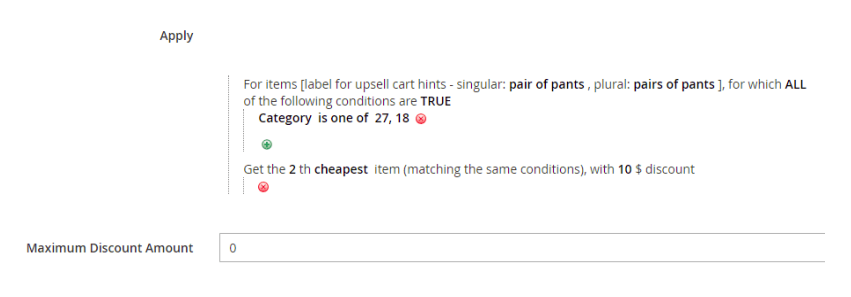
The rule in this example is – “Get $10 discount on second cheapest pair of pants”. The maximum discount amount is 0, that is, there is no limit on the maximum discount amount.
Note: In our example, pair of pants is any product that belongs to category 18 (men pants) or category 27 (women pants).
Cart examples for this rule:
- Customer has 1 pair of pants in cart. There is no discount
- Customer has 2 pair of pants (worth $20 and $30). The discount amount is $10.
- Customer has 3 pairs of pants (worth $20, $30 and $35). The discount amount is $10.
Upsell cart hints example for this rule:
- Customer has 1 pair of pants in cart. The upsell cart hint is “Add one pair of pants, to get the next pair of pants with $10 discount!”
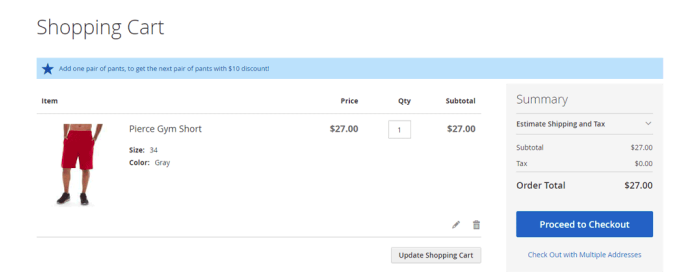
Cheapest / Most Expensive - Fixed Price
Example
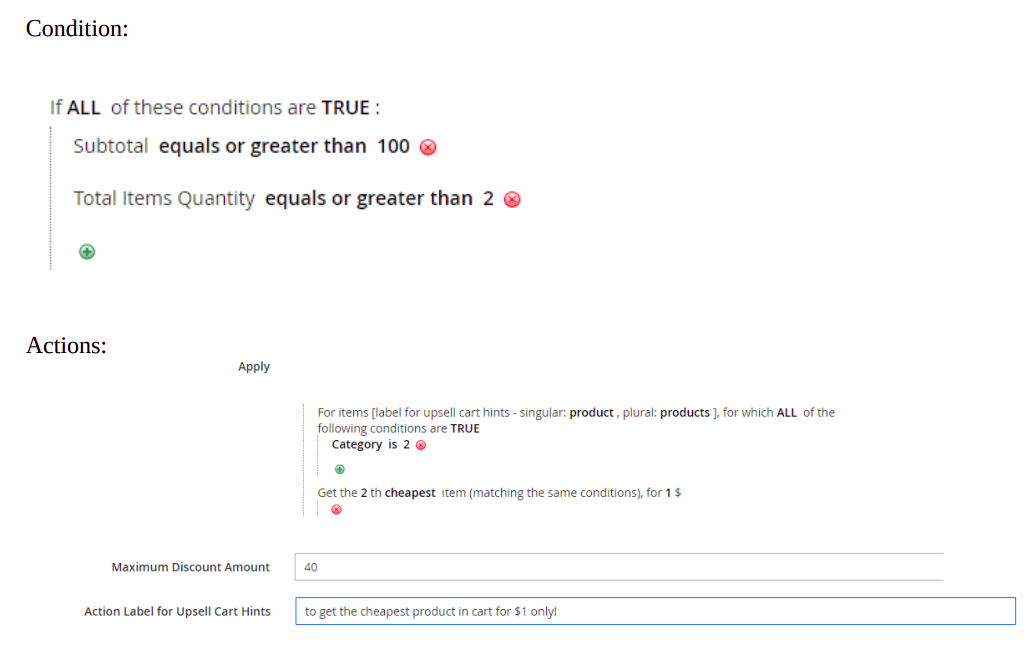
The rule in this example is – “Get the cheapest product in cart for $1 only, when buying at least 2 products for at least $100”. The maximum discount amount is $40
Cart examples for this rule:
- Customer has 1 bag in the cart. There is no discount, since there is only one product in cart.
- Customer has one bag ($20) in the cart and one watch ($50). There is no discount since the subtotal is $70 (less than $100)
- Customer has one watch ($70) and one bracelet ($100). There is no discount, since the discount ($69) would exceed the maximum discount amount of $40.
- Customer has one watch ($70) and two t-shirts ($20 each). The discount amount is $19.
Upsell cart hints example for this rule:
Customer has 2 bags ($32 and $38) in cart. The upsell cart hint is “Add $30 worth more products, to get the cheapest product in cart for $1 only!” –
